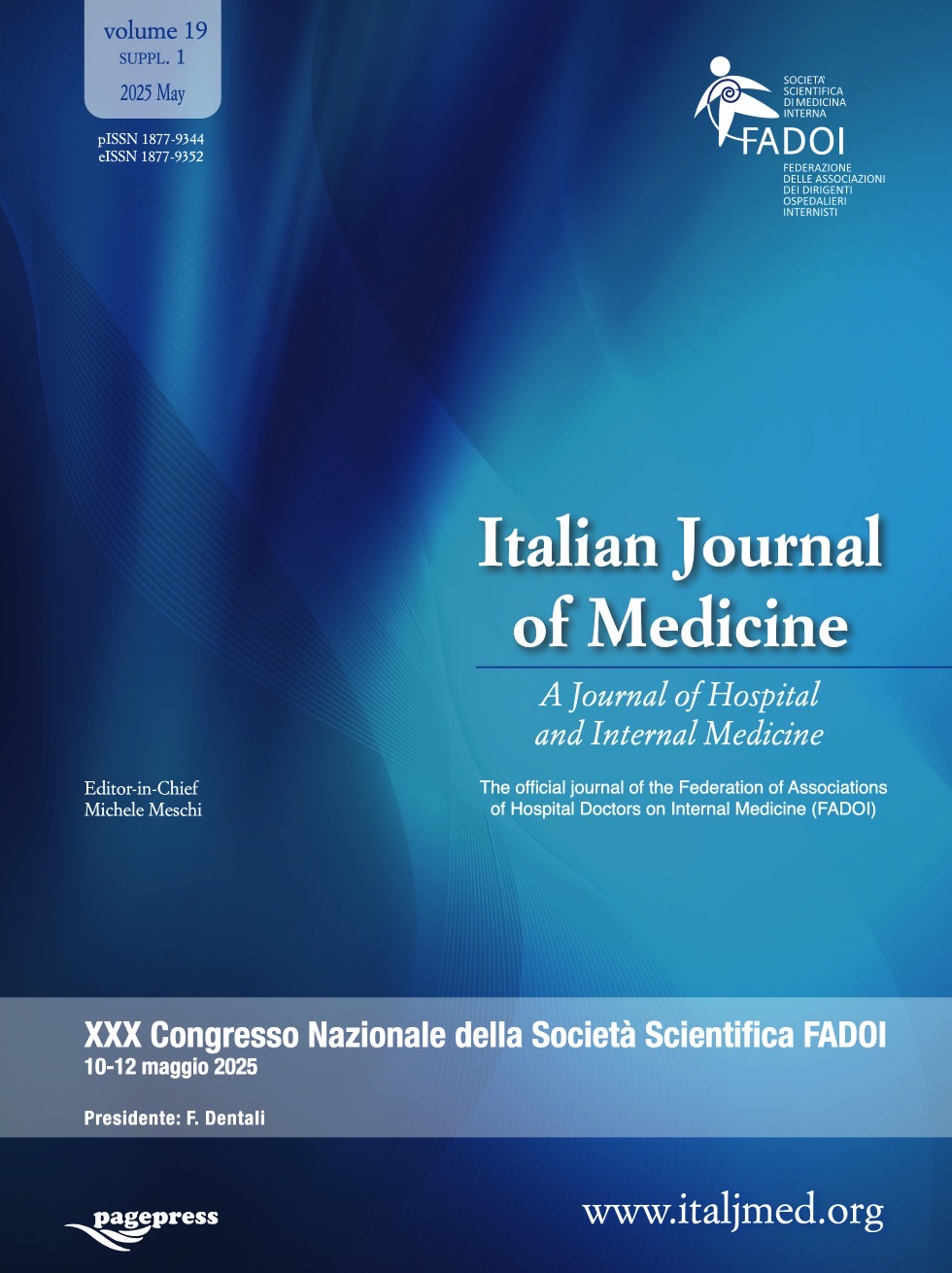XXX FADOI Italian Congress | 10-12 May 2025
25 August 2025
Vol. 19 No. 1(s1) (2025): XXX FADOI Italian Congress | 10-12 May 2025
CO15 | A single-center experience in screening patients for carbapenem-resistant enterobacteriaceae at admission
C. Fonnesu1, M.A. Distasi2, R. Napoletano3, R. Bruno4, R. D’errico1, A. Crapolicchio4, M. Frualdo1, A. Quarticelli1, L. Ceci5, S. Lenti6 | 1Dirigente Medico, UOC Medicina Interna, Ospedale Lorenzo Bonomo, Andria, ASL BAT, 2Dirigente Medico, UOC Patologia Clinica, Ospedale Lorenzo Bonomo, Andria, ASL BAT, 3Scuola di Specializzazione di Medicina Interna, Ospedali Riuniti di Foggia, 4Dirigente Biologo, UOC Patologia Clinica, Ospedale Lorenzo Bonomo, Andria, ASL BAT, 5Direttore, UOCPatologia Clinica, Ospedale Lorenzo Bonomo, Andria, ASL BAT, 6Direttore, UOC Medicina Interna, Ospedale Lorenzo Bonomo, Andria, ASL BAT, Italy
Publisher's note
All claims expressed in this article are solely those of the authors and do not necessarily represent those of their affiliated organizations, or those of the publisher, the editors and the reviewers. Any product that may be evaluated in this article or claim that may be made by its manufacturer is not guaranteed or endorsed by the publisher.
All claims expressed in this article are solely those of the authors and do not necessarily represent those of their affiliated organizations, or those of the publisher, the editors and the reviewers. Any product that may be evaluated in this article or claim that may be made by its manufacturer is not guaranteed or endorsed by the publisher.
49
Views
0
Downloads







